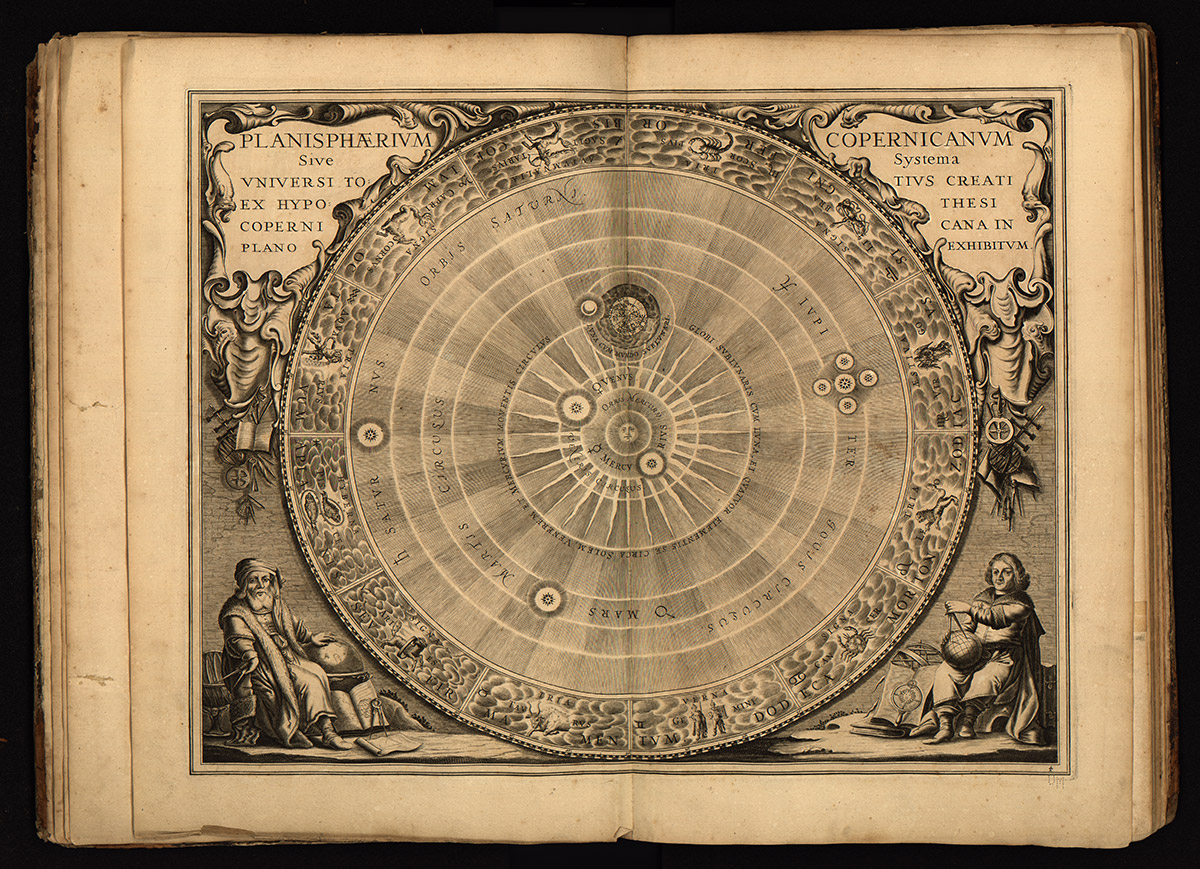A New Universe?

- Engraving showing the structure of the universe according to the Copernican system.
- Andreas Cellarius (ca. 1596-1665).
- Harmonia Macrocosmica seu Atlas Universalis et novus, totius universi creati cosmographiam generalem, et Novam Exhibens. 2 vols.
- Amsterdam: Johannes Janssonius, 1660.
Throughout medieval and early modern Europe, the teaching of astronomy was mostly based on the principles established in Ptolemy’s Almagest: the Moon, Sun, and five planets functioned within a complex system of epicycles and deferents around a fixed earth located in the center (geocentrism). However, Copernicus’ De Revolutionibus orbium coelestium libri sex (Six Books on the Revolutions of the Celestial Spheres) radically challenged the principles of ancient cosmology by placing the Sun at the center and the earth daily spinning on its axis and circling the Sun along with the other planets.
Broadly speaking, the arrangement of this ambitious work can be described as follows. In Book 1 of De Revolutionibus, Copernicus explains how the daily rising and setting of the Sun and planets are explained by the daily rotation of the Earth on its polar axis. The various locations of the Sun throughout the constellations and the existence of seasons are explained by the annual revolution of the Earth around the Sun. Book 2 includes the mathematics of astronomy and a star catalog based on Ptolemy; and books 3, 4, 5, and 6 deal with the motions of the Earth, Moon, and planets, including calculations on the relative distances between the earth and the planets.